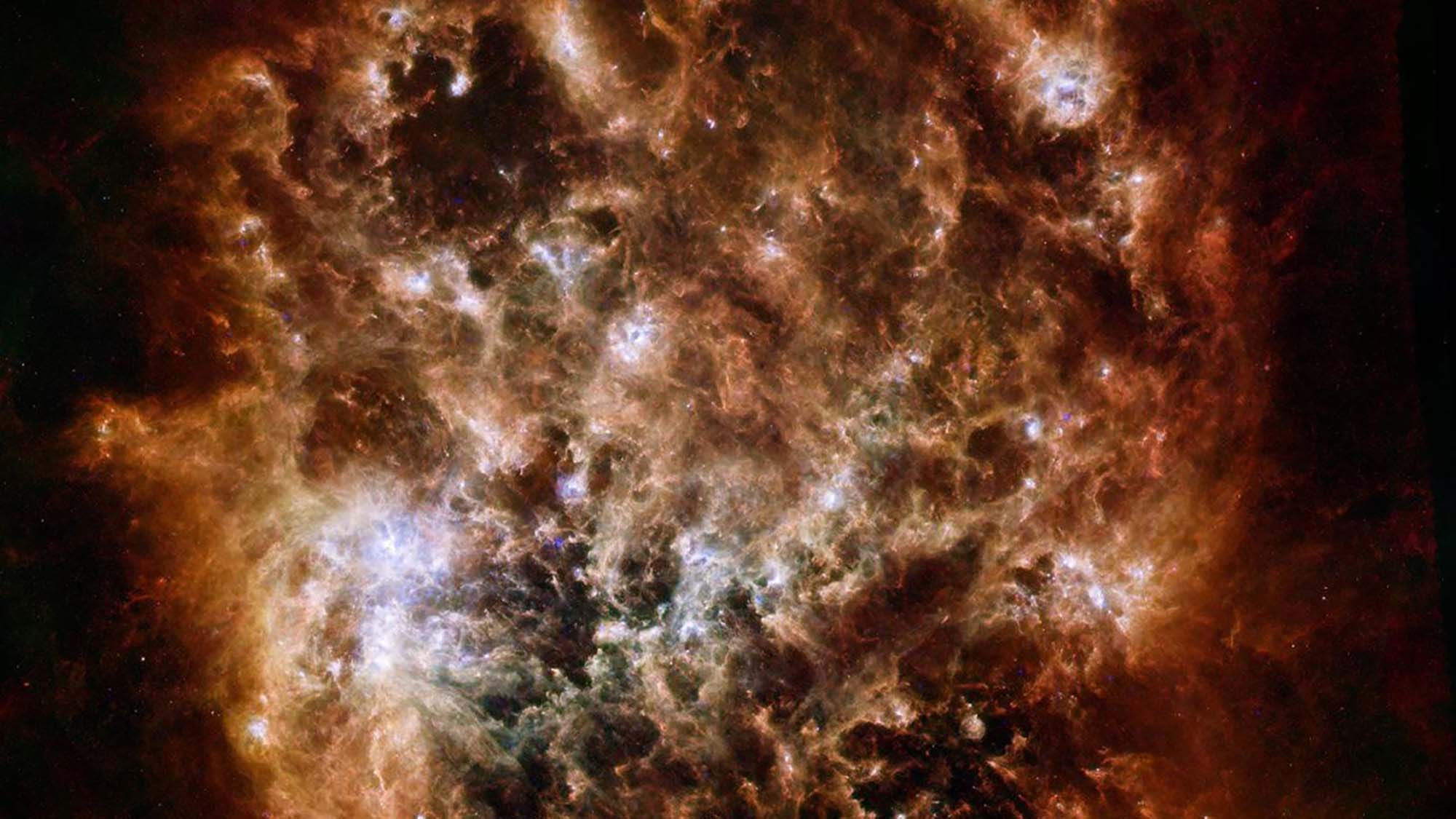
The Large Magellanic Cloud photographed in infrared light. (Photo courtesy NASA/JPL)
Ancient stars, green nudges, lysosomal mysteries, and more.
Twinkle, twinkle, ancient star
The Large Magellanic Cloud (LMC) sits just outside the Milky Way—so close, in fact, that portions of this dwarf galaxy are visible from the Southern Hemisphere. Now researchers, including UChicago postdoctoral scholar Anirudh Chiti and assistant professor Alexander Ji, believe they’ve identified within our near neighbor one of the universe’s most ancient stars. The first generation of stars, formed in the aftermath of the big bang, have likely all died out, so the second generation—to which this star belongs—offers the best chance of understanding the chemical composition of the early universe. Using the Magellan Telescope and the Gaia satellite, the researchers identified 10 stars within the LMC that contain less of the heavy elements that characterize younger stars; one in particular stood out. LMC 119, which is probably about 13 billion years old, contains much less carbon and iron than the Milky Way’s oldest stars, suggesting that different conditions were present during the formation of each galaxy. The research was published March 20 in Nature Astronomy.
Cell signals
The lysosomes within our cells play an important role in breaking down waste materials—a complex process that involves calcium ions moving in and out of the organelles. While scientists have known for decades how calcium ions leave lysosomes, how they return has not been well understood. In a study published February 14 in Science Advances, a team of UChicago researchers, led by professor of chemistry Yamuna Krishnan, identified the protein responsible for regulating calcium ion reentry. This discovery could help develop treatments for neurodegenerative diseases characterized by lysosomal dysfunction, including Alzheimer’s disease, Parkinson’s disease, and amyotrophic lateral sclerosis.
Cities in context
A growing body of evidence points to the importance of social contexts in reducing or preventing the formation of implicit racial biases. Recent research by an interdisciplinary team, including UChicago’s Marc Berman and Luís Bettencourt, adds to that literature by examining the relationship between urban environments and racial attitudes. Combining data from the US Census and the Implicit Association Test, a widely used measure of bias, the study finds that more populous, more diverse, and less segregated cities are also less biased. Of note, increases in population size and diversity and decreases in segregation preceded decreases in implicit biases by about one year in a majority of cities. At longer timescales, the researchers found preliminary evidence for a feedback loop, where reductions in bias might influence migration and desegregation patterns and vice versa. The study was published February 6 in Nature Communications.
Cutting cutlery
With the COVID-19 pandemic came a boom in food delivery orders; the consumption of single-use plastic, already a significant problem, also surged. In 2019 and 2020, the Chinese government introduced regulations in major cities prohibiting food delivery companies from including single-use cutlery in orders unless explicitly requested. Researchers at the Energy Policy Institute at the University of Chicago’s China Center (EPIC-China) collaborated with Alibaba Group’s mobile food delivery platform, Eleme, to study the impact of “green nudges” introduced to comply with these regulations. Eleme set the default option on orders to “no cutlery” and rewarded customers who kept that selection with “green points” to fund the planting of trees in China’s deserts. Examining data from about 200,000 Eleme users in 10 cities, a team led by EPIC-China’s research director, Guojun He, found that no-cutlery orders increased by 648 percent. The researchers project that green nudges, if implemented nationwide in China, would prevent the use of 21.75 billion single-use cutlery sets each year. The study was published September 8, 2023, in Science.
